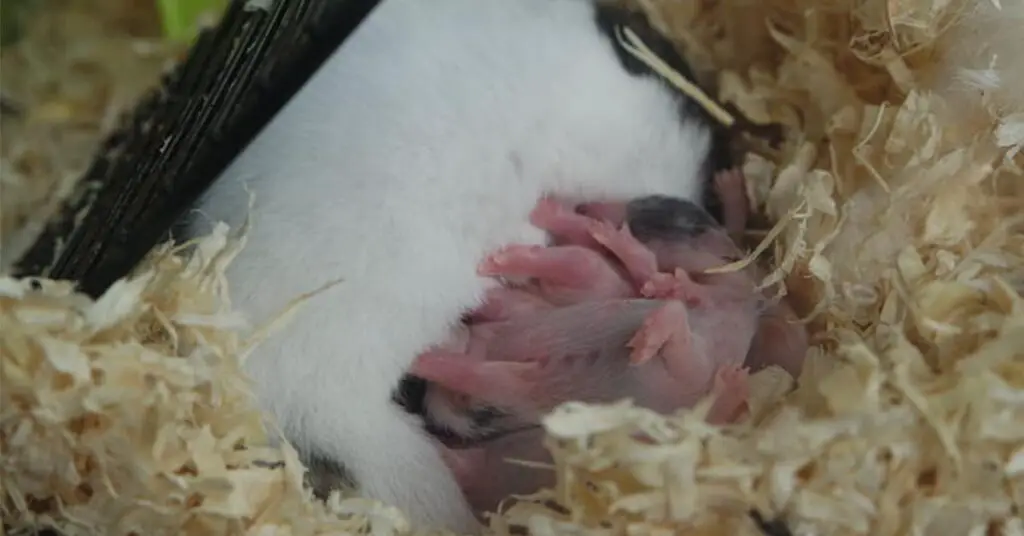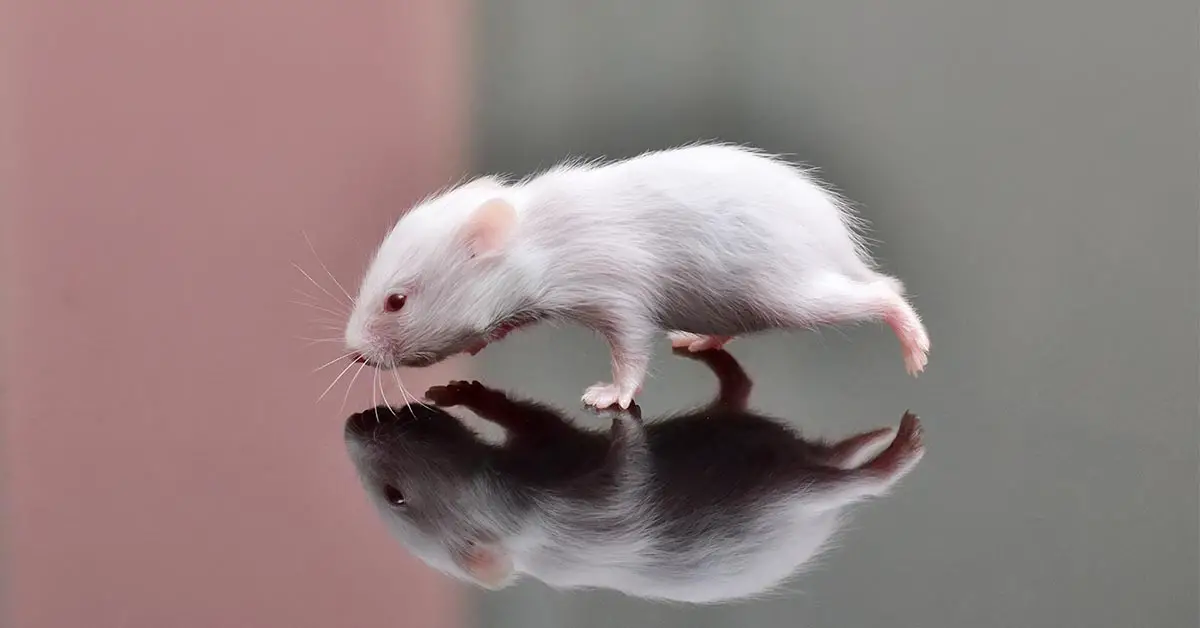Hamster births can be a fascinating and rewarding experience for pet owners and potential breeders. However, understanding the reproductive cycle and birthing process of these small rodents is crucial in order to ensure the safety and well-being of both the mother and her litter. In this article, we will discuss the various aspects of hamster births, including the reproductive cycle, preparing for birth, the birthing process, and care for the newborns.
Table of Contents
The Reproductive Cycle Of Hamsters
Hamsters have an estrous cycle that lasts for about four days and a breeding season that typically runs from late spring to early autumn. Female hamsters reach sexual maturity at around three to four months of age, and males at around four to five months. During the estrous cycle, female hamsters will display signs of being in heat, such as increased activity, restlessness, and a swollen vulva. Male hamsters will also display increased activity and aggression during this time.
Mating behavior for hamsters is relatively simple, the male will chase and mount the female. After mating, the female will typically become less active and may even be more aggressive towards the male. This is normal behavior, as the female is preparing for pregnancy and is protecting her territory.
Preparing For Birth
As the pregnancy progresses, the mother hamster will begin to prepare a nest for her litter. This is typically done by pulling fur from her own belly and using it to line the nest. Pet owners should provide nesting material such as shredded paper or straw to help her with this process. It is also important to make sure the mother has access to fresh water and food, as her nutritional needs will increase during pregnancy.
It is also important to monitor the pregnancy and watch for any potential complications. Signs of a problem pregnancy may include a lack of nest building, no weight gain, or a decrease in activity. If any of these signs are observed, it is important to consult with a veterinarian for professional advice and assistance.
The Birthing Process
How Many Babies Can A Hamster Have At Once?
The birthing process for hamsters typically takes place within a 24-hour period, and the mother will give birth to a litter of 4-12 pups. During labor, the mother will become increasingly restless and may even vocalize. It is important to provide a quiet and comfortable environment for the mother during this time, as stress can cause complications during and after hamster births.
Click here for a medical explanation of hamster births.
Once the first pup is born, the mother will begin to clean and care for the newborns. She will also separate the placentas and eat them, which is normal behavior and helps to keep the nest clean. It is important to not disturb the mother or the litter during this time, as it can cause stress and may even lead to the mother rejecting or abandoning her litter.
Care For The Newborns
Following the hamster births, the newborns will be small, hairless, and blind at birth, and will need to be cared for by the mother for the first few weeks of their lives. She will provide them with warmth and nourishment through nursing. Pet owners should monitor the litter to ensure that the mother is caring for them properly and that all of the pups are gaining weight.

It is also important to provide a clean and comfortable environment for the mother and her litter. This means keeping the cage clean, providing fresh water and food, and making sure the temperature is not too hot or too cold.
After three to four weeks, the pups will begin to grow hair and open their eyes. At this point, they will start to explore their surroundings and begin to eat solid food. Pet owners can introduce a small amount of hamster food and fresh fruits and vegetables to the cage.
How Long Until A Hamster Is Ready To Breed Again After Giving Birth?
Hamsters typically become ready to breed again after giving birth around 4-6 weeks. However, it is important to consider the overall health and condition of the mother before breeding again, as well as the size of the litter and the overall capacity to care for them. It is always best to consult with a veterinarian experienced in small animal care before breeding again to ensure the safety and well-being of the mother and her potential litter.
Hamster births can be a rewarding experience for pet owners and potential breeders, but it is important to have a good understanding of the reproductive cycle and birthing process in order to ensure the safety and well-being of both the mother and her litter. By monitoring the pregnancy, providing a comfortable and safe environment, and properly caring for the newborns, pet owners can help ensure a successful birth and healthy litter.
It is also important to remember that while hamsters are relatively hardy and easy to care for, they are still living creatures and can experience complications. It is always best to consult with a veterinarian for professional advice and assistance if any concerns or issues arise.
How To Safely Handle And Care For Baby Hamsters
Handling and caring for baby hamsters can be a fun and rewarding experience, but it is important to remember that these tiny creatures are delicate and require special attention. Here are some tips for safely handling and caring for baby hamsters:
- Always wash your hands before handling the baby hamsters. This will help to prevent the spread of germs and bacteria that could harm the babies.
- When handling baby hamsters, use a cupped hand to support their entire body. This will help to prevent them from falling or getting injured. Be sure to hold them close to your body for warmth and support.
- Always handle baby hamsters gently and avoid squeezing or squeezing them too tightly. This can cause harm to their delicate bodies.
- It’s important to provide a safe and comfortable environment for baby hamsters. Use a small cage or container that is well-ventilated, but not too drafty. A nest box or a small container filled with soft bedding, such as shredded paper or wood shavings, will provide a comfortable place for the babies to rest.
- Baby hamsters require a diet that is high in protein and fat. You can provide them with small pieces of hard-boiled egg, cottage cheese, or a commercial hamster food. Be sure to provide fresh water at all times.
- Keep the temperature of the cage or container warm, around 25-30 degree Celsius.
- Monitor the babies regularly for any signs of illness or injury. If you notice any problems, contact a veterinarian who is experienced in treating small animals.
- Be aware that baby hamsters can be quite active and curious, so it’s important to supervise them at all times. Keep an eye on them when they are out of their cage or container to ensure that they don’t get into any trouble.
- Be prepared to spend a lot of time with the babies. Hamsters are social animals and thrive on human interaction. Make sure you spend time playing and interacting with the babies each day to help them bond with you.
- Lastly, remember that baby hamsters are fragile and require a lot of care and attention. Be patient and take the time to learn about their needs so that you can provide them with the best possible care.
How To Safely Introduce New Baby Hamsters To Other Hamsters
Introducing new baby hamsters to other hamsters can be a tricky process, but with the right approach, it can be done safely and successfully. Here are some tips for introducing new baby hamsters to your existing hamster community:
- Before introducing new baby hamsters, ensure that your existing hamsters are healthy and free from any illnesses or diseases. If your existing hamsters are not in good health, it’s best to wait until they have recovered before introducing new babies.
- Start by introducing the new baby hamsters to the existing hamsters’ scent. This can be done by placing a piece of cloth or a small towel that has been in contact with the new babies near the existing hamsters’ cage. This will allow the existing hamsters to get used to the new babies’ scent before they meet in person.
- Once the existing hamsters have become accustomed to the new babies’ scent, you can begin the introduction process. It’s best to do this in a neutral area, such as a large playpen or a neutral room. This will help to prevent any territorial behavior from the existing hamsters.
- Introduce the new baby hamsters slowly and gradually. Start by placing the new babies in a small carrier or cage next to the existing hamsters’ cage. This will allow the existing hamsters to see and smell the new babies without being able to interact with them directly.
- Over the next few days, gradually move the new babies’ carrier or cage closer to the existing hamsters’ cage. As the new babies and existing hamsters become more familiar with each other, you can start to allow them to interact through the bars of the cage.
- Keep a close eye on the interaction between the new babies and existing hamsters, and be prepared to intervene if necessary. If you notice any aggressive behavior or signs of stress, separate the hamsters immediately and try again later.
- Once the new babies and existing hamsters seem comfortable with each other, you can start to allow them to interact outside of the cage. Keep a close eye on them during these interactions to ensure that they continue to get along.
- Keep in mind that introducing new baby hamsters to other hamsters can be a stressful experience for both the new babies and the existing hamsters. Be patient and take your time to ensure that the process goes as smoothly as possible.
- Remember that not all hamsters get along and it is okay if they choose not to socialize. Some hamsters are solitary animals and may not want to share their space with others.
- Lastly, it’s important to provide plenty of food, water, and hiding places for all of the hamsters. This will help to reduce the chances of territorial behavior and ensure that everyone has enough space to feel comfortable.
In conclusion, understanding the reproductive cycle and birthing process of hamsters is crucial for pet owners and potential breeders. By providing proper care and monitoring for potential complications, you can help ensure a safe and successful birth for the mother and her litter. As always, it is important to consult with a veterinarian for professional advice and assistance. With the proper knowledge and care, you can enjoy the joys of having a new litter of hamsters.
Frequently Asked Questions
Q: How long is a hamster’s pregnancy?
A: A hamster’s pregnancy typically lasts for about 16-18 days.
Q: What are the signs of a hamster being in heat?
A: Signs of a hamster being in heat include increased activity, restlessness, and a swollen vulva.
Q: How many pups are typically born in a litter?
A: Hamster births typically result in a litter of 4-12 pups.
Q: What should I do if I think my hamster is having trouble during the birthing process?
A: If you suspect that your hamster is having trouble during the birthing process, it is important to consult with a veterinarian for professional advice and assistance.
Q: How can I tell if my hamster is pregnant?
A: Signs of pregnancy in hamsters include a swollen belly, lack of estrous behavior and nesting behavior.
Q: How long do newborn hamsters have to be cared for by their mother?
A: Newborn hamsters will need to be cared for by their mother for the first few weeks of their lives. After 3-4 weeks, they will start to grow hair and open their eyes, and they will start to explore and eat solid food.
Q: What should I feed my newborn hamsters?
A: Newborn hamsters will be nourished by their mother’s milk. After 3-4 weeks, you can introduce small amounts of hamster food and fresh fruits and vegetables to their diet.
Q: Can I handle the newborn hamsters?
A: It is best to avoid handling newborn hamsters for the first few weeks of their lives. This is because handling them can cause stress and may lead to the mother rejecting or abandoning them.
Q: What should I do if my hamster abandons her litter?
A: If a mother hamster abandons her litters, it is important to consult with a veterinarian for professional advice and assistance. It may be necessary to hand rear the pups with the help of a veterinarian or experienced breeder.

